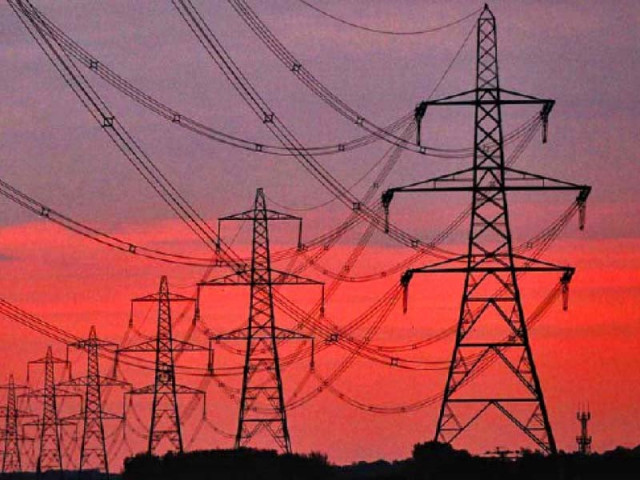Tackling high energy prices in 2022
Increase in domestic production by 50% can mitigate impact of lofty crude prices

Oil prices surged in 2021, with the international benchmark Brent crude rising from $55 a barrel at the start of the year to $80 in December, driven by the rise in demand.
Global economic recovery and tight supplies also pushed prices of other commodities higher, including LNG whose price more than doubled in Asia.
Due to robust global demand, prices may remain high in 2022. Global economy is expected to expand 4.9% this year, according to the IMF’s estimate.
Demand for energy products will rise with the increase in travel and business activity. In the crude oil market, for instance, global consumption is forecast to climb to 99.53 million barrels per day (bpd) in 2022, up from 96.2 million bpd last year, as per the International Energy Agency.
This means that crude oil consumption will essentially climb back to pre-Covid levels of 99.55 million bpd seen in 2019.
In Pakistan, petrol and diesel consumption rose 10.8% and 19.8% in the first five months (Jul-Nov) of current fiscal year as compared to the same period of last year, despite rising pump prices.
Supplies, however, may remain tight. Several OPEC members have struggled to increase output while the US shale oil producers, facing pressure from shareholders, are concentrating on keeping spending low. In this environment, oil prices may remain elevated.
High energy prices will weigh on Pakistan’s current account deficit, which came in at $7 billion in the first five months of the ongoing fiscal year, as opposed to the surplus of $1.64 billion reported for the same period a year earlier, according to data released by the State Bank of Pakistan.
To ease pressure on the country’s finances, the policymakers need to prepare in advance for what could be a challenging future.
Oil refineries in Pakistan are operating well below their nameplate capacities due to the low procurement of furnace oil, which makes an already dire situation worse.
There are five oil refineries that can together produce 3.3 million tonnes of petrol and 5.9 million tonnes of high-speed diesel (HSD) each year. But due to the low utilisation, their annual production is estimated to be around 2.05 million tonnes of petrol and 3.96 million tonnes of HSD.
This creates a shortfall of almost 3.2 million tonnes of petrol and diesel, which has to be imported for around $1.5 billion to $2 billion.
With persistently high commodity prices in the international market, the fuel deficit could keep hurting the current account balance.
However, by making efforts that help lift refinery utilisation and thereby increase domestic petrol and diesel production by around 50%, Pakistan can mitigate the impact of lofty oil prices.
This can be done by prioritising the consumption of domestic furnace oil stocks held by refineries and oil marketing companies, ahead of imports.
Recently, the government allowed significant imports of furnace oil, instead of first lifting stocks that were already available at home. Soon, the refineries ran out of storage capacity and all either had to curtail or completely shut down operations, which further hurt the utilisation rates.
On top of this, the unnecessary imports had a negative influence on the current account deficit. Episodes like these must be avoided in future and policymakers should ensure nobody imports furnace oil until domestic inventories are depleted.
Skyrocketing LNG price
Meanwhile, Asia’s LNG price has recorded a phenomenal growth. The JKM LNG price was at $30.51 per mmbtu in December, up from $13.33 a year earlier.
On top of this, the buyers are also facing the risk of order cancellations from sellers, which Pakistan has experienced.
LNG is used extensively in Pakistan by the IPPs for power generation. But if LNG prices keep moving higher, then Pakistan should consider replacing LNG with furnace oil as the feedstock for power plants.
This will help improve refinery utilisation. Additionally, the scarce gas supplies that are then available can be diverted to households and export-oriented industries.
Measures required
Pakistan can also take several other measures to soften the blow of high commodity prices. These may not yield immediate positive returns but will certainly help over the long term.
First and foremost, work needs to be done on increasing domestic oil and gas production. The country’s gas reserves are declining at an annual rate of 9%, Minister for Energy Hammad Azhar recently informed the cabinet, while production is also going downhill.
This raises Pakistan’s reliance on expensive foreign LNG. To avert an impending crisis, exploration work should be ramped up, particularly for shale gas, by drafting new policies that give incentives to exploration and production companies.
At the same time, effective measures should be taken to curb theft and distribution losses.
There is also a dire need to strengthen the country’s energy supply chain, which will make the energy supply system more efficient and bring down costs. This can be done by expediting the construction of LNG terminals, enhancing storage capacity, and building pipelines.
Oil and gas handling capacity at ports should also be expanded to reduce congestion and delivery delays.
A Karachi-based petroleum company is using its Single Point Mooring (SPM) – which is a floating jetty located in deep-sea off the coast of Balochistan – to import crude oil.
Authorities should consider using this facility and encourage the private sector to deploy more SPMs to ease pressure on ports and strengthen the crude oil supply chain.
The writer focuses on subjects of business and economics, specialising in the energy sector
Published in The Express Tribune, January 10, 2022.
Like Business on Facebook, follow @TribuneBiz on Twitter to stay informed and join in the conversation.











1733130350-0/Untitled-design-(76)1733130350-0-208x130.webp)







COMMENTS
Comments are moderated and generally will be posted if they are on-topic and not abusive.
For more information, please see our Comments FAQ